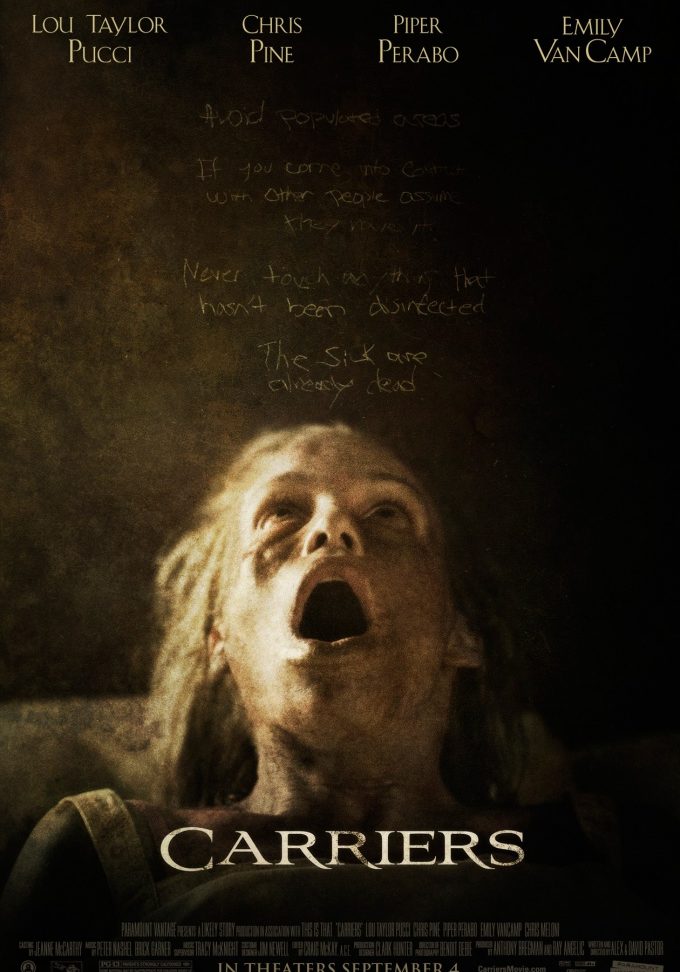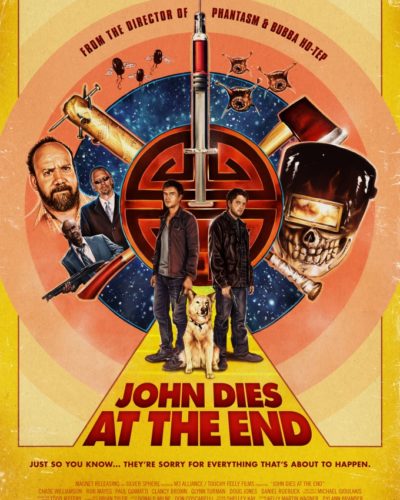The Road to Desolation: A “Carriers” Review
Imagine a world stripped bare of its warmth, where the road is no longer a symbol of freedom but a harrowing path of survival. This is the grim reality painted in the movie “Carriers” helmed by directors Àlex and David Pastor. Released in 2009, this post-apocalyptic horror-thriller follows four friends—played by Chris Pine, Piper Perabo, Lou Taylor Pucci, and Emily VanCamp—as they navigate a desolate America ravaged by a viral pandemic. Charged with the safe passage to a place they believe can offer sanctuary, they must adhere to a strict set of rules to avoid infection. Their journey spirals into a spine-chilling exploration of human nature when civilization crumbles.
A Symphony of Dread
Crafting the Apocalypse
The horror of “Carriers” stems not from supernatural entities or slashers, but the omnipresent dread of disease and the disintegration of societal norms. The tension is palpable, with the directors adeptly utilizing the bleak and barren landscapes to mirror the despair and hopelessness that grip the characters. The film eschews grandiose set-pieces, instead reveling in anxiety-inducing situations that evoke a visceral fear of contagion and moral decay.
Through the Doomsday Lens
The Pastor brothers’ choice of muted color palettes and desolate backdrops, combined with unflinching camera work, adds a layer of somber reality to the story. The visual style is stark and minimalist—there’s an absence of the typical horror gimmickry, and the result is a haunting portrayal of a world where the end has truly arrived. The cinematography weaves a tale of its own, often framing the characters against vast nothingness, heightening the sense of isolation.
Whispers and Silence
Audio plays a critical role in the film’s eerie ambiance. At times, the absence of music leaves only the sounds of the desolate world—a chilling reminder of the characters’ solitude. When the score does surface, it complements the bleak visuals with understated yet evocative tones that reinforce the movie’s somber mood. Sound effects are judiciously used to jolt the viewer, creating an atmosphere where even the softest whisper carries weight.
Frighteningly Human
Survival’s Persona
Performance-wise, the cast astonishes with a portrayal of people teetering on the edge of humanity. Pine and Pucci, in particular, display compelling turns as brothers forced to make unthinkable choices. The characters’ complexities are peeled back layer by layer, revealing painfully believable responses to unrelenting horror. There is an authenticity to their fear that grounds the film, making the scenario all the more chilling.
Horror Unbound
“Carriers” falls into the subgenre of psychological horror, dabbling in themes of survivalism and ethical ambiguity. It eschews gore for mental anguish, relying on the potent fears of infection, isolation, and betrayal to terrify. The filmmakers skillfully avoid tired clichés, focusing instead on the chilling realism of a pandemic situation, which, in light of recent global events, resonates on a profound level.
Beyond the Contagion
Reflections of Reality
With its understated narrative, “Carriers” is a horror film interwoven with bleak social commentary. It grapples with the fragility of social constructs and the human condition in the face of calamity. The film prompts viewers to ponder on themes of morality, connection, and survival instincts, enriching the narrative beyond mere shock value. This thematic depth elevates “Carriers” from typical genre fare to a contemplative experience.
A Verdict on Viral Terror
The film’s execution is far from perfect—some may find the deliberate pacing and the lack of definitive scares too subdued for their tastes. However, for those who appreciate a slow-burn horror that’s more pensive than petrifying, “Carriers” delivers a thought-provoking and disturbing vision of the end times. Its subtle brand of terror will appeal to genre followers looking for an emotionally resonant narrative, as well as viewers who appreciate horror that derives from human instincts rather than fantastical elements.
Compared to heavyweights in the post-apocalyptic genre, “Carriers” remains a low-key yet profound entrant, focusing on the psychological impact of its horror over spectacle. It echoes the bleak reality of Cormac McCarthy’s “The Road” blended with the intimate character studies found in Danny Boyle’s “28 Days Later.”
In conclusion, “Carriers” is a film that may slip under the radar for many, but it warrants attention for its unnerving depiction of a society unmoored by disease. While it may not satisfy those craving visceral thrills, it offers a deep, reflective view of horror that is rare in the genre. Viewer discretion is advised for scenes of illness and mortality, which can be troubling. Bearing its strengths and weaknesses in mind, “Carriers” should find a place on the watchlist of those seeking a horror film with both tension and intellect.




